Flying Down to Rio
Flying Down to Rio
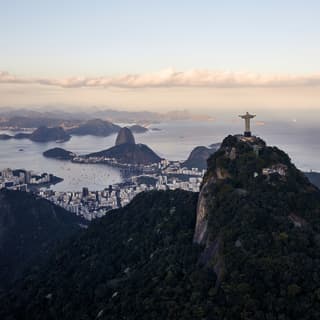
As Copacabana Palace turns 100, we explore a century of cinematic memories. Fly down to Rio with Rafa Sales Ross as she guides us through the city’s silver-screen legacy.
Not every major hotel can boast about having two grand openings. Copacabana Palace, however, can. Standing proud in Rio de Janeiro’s iconic Copacabana neighborhood and modeled by French architect and designer Joseph Gire after the great beach hotels of the nineteenth and early twentieth century, the hotel swung open its doors to grand fanfare all the way back in 1923.
But it was ten years later that the Copa had yet another lavish inauguration, a fictional one, in Thornton Freeland’s 1933 RKO Pictures musical Flying Down to Rio.
The film, produced by one of the most notorious studios in the Golden Age of Hollywood, marked the first screen pairing of Fred Astaire and Ginger Rogers, a duo that would come to carve their names as the great stars of this cinematic era. In Flying Down to Rio, Astaire and Rogers play Fred Ayres and Honey Hale, the accordionist and lead singer of a popular orchestra band led by composer Roger Bond (Gene Raymond). It is Bond’s obsession with socialite Belinha (Dolores del Río, whose high-profile partner Orson Welles would come to stay at the hotel almost a decade later) that leads the band to Rio de Janeiro, where the young woman is from.
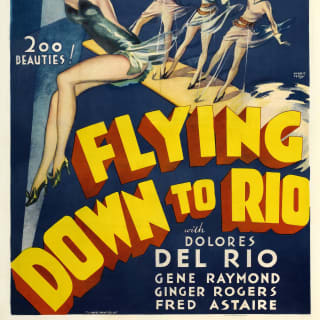
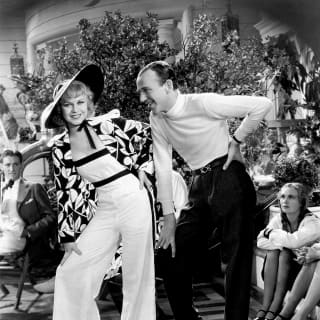
The band comes to town under the pretense of playing at the inauguration of the ‘Atlantic Hotel’, a fictionalized version of the Copacabana Palace owned by Belinha’s mogul father. The name is a fitting one, given that the real-life hotel resides at Atlantic Avenue, the seafront avenue that spans the scalloped shores of the Copacabana and Leme beaches, with almost 5km of walkable paths bustling with joggers, cyclists and passersby.
The Atlantic Hotel, although recreated at the RKO studios over six thousand miles away from Rio, meticulously recreates the imposing and iconic art deco façade of Copacabana Palace, with an aerial view of the classic building featuring in the film’s grand finale as dancers are lifted from the ground into the skies to perform the memorable closing number. Chorus girls dance atop small planes in a series of neatly designed ensembles, from nautical-themed pantsuits to revealing two-pieces, a risqué choice that nodded directly at Carioca bikini culture.
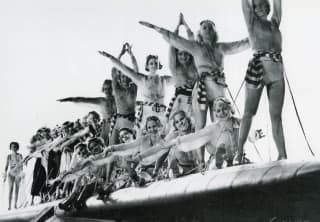
Walter Plunkett and Irene Maud Lentz, known professionally as Irene, craft the film’s costume design, which fluctuates from the lavish fur coats and gowns of American high society to thoughtful homages to Brazilian heritage, such as elaborate headpieces that pay tribute to Brazilian singer Carmen Miranda. Through his work with RKO Pictures, Plunkett would come to revolutionize the inner workings of costume design as a whole, eventually signing the wardrobe for all-time classics such as Gone With the Wind (1939) and Singin’ in the Rain (1952).
After the success of Flying Down to Rio, which positioned the Brazilian city as a deeply cinematic cosmopolitan hub, Copacabana Palace became the preferred residence of A-listers, welcoming Old Hollywood stars such as Ava Gardner, Marlene Dietrich, Jayne Mansfield, and Brigitte Bardot in the first half of the 20th century and housing contemporary stars such as Robert De Niro, Tom Cruise, Helen Mirren and Anthony Hopkins over the last few decades.
As a Rio resident and cinephile, I have been among those to gather outside the hotel’s regal entrance, eagerly waiting for a movie star to come through its doors, the flashlights of photographers almost as blinding as the tropical sun. It is while waiting outside of the Copa that I managed to spot Vin Diesel, Kristen Stewart and Robert Pattinson, all in town to shoot glitzy big-budget sequels for the Fast and Furious and Twilight franchises.
Granted, car chases led by Dominic Toretto and the romantic affairs of beautiful vampires are not the only films to draw inspiration from the Rio de Janeiro shores, and many filmmakers have looked to the naturally cinematic landscape of Copacabana for their productions. Carlos Saldanha’s Oscar-nominated Rio (2011) sees macaw bird Blu (Jesse Eisenberg) embark on an adventure that takes him and his troupe through Rio’s most famous beauty spots—Copacabana included, of course. In 1979, James Bond himself took a trip to Brazil in Moonraker, with Roger Moore featuring in an adrenaline-inducing scene at the Sugar Loaf cable car, where one can get some of the most breathtaking views of the city’s beaches.

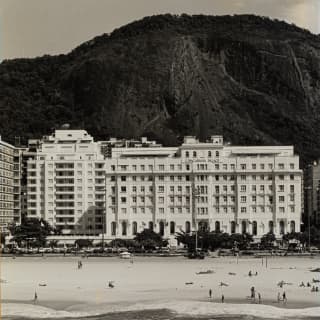
The neighborhood of Copacabana is heavily featured in Fernando Meirelles and Kátia Lund’s City of God (2002), regularly considered one of best Brazilian movies of all time—and one of former U.S. President Barack Obama’s personal favorites. Iconic French actor Jean-Paul Belmondo paraded through the Copacabana sand in That Man From Rio (1964) while one of the most iconic American stars of all-time, Mick Jagger, shot the 1985 cult movie Running Out of Luck on Brazilian soil, 21 years before The Rolling Stones played to an audience of 1.5 million people in Copacabana Beach, one of the biggest free concerts in history and a moment now etched in rock 'n' roll history.
Copacabana Palace itself has been a prominent location in cinema, with Oscar-winning actor Jean Dujardin parading through its lobby in Michel Hazanavicius’ OSS 117: Lost in Rio (2010) and Bill Pullman and Charlotte Rampling shooting at the grand hotel for Jonathan Nossiter’s 2010 Rio Sex Comedy. Another national classic to be shot at the Palace was Ruy Guerra’s The Unscrupulous Ones, which played at the prestigious Berlin International Film Festival in 1962.
Be it as a glitzy backdrop, shooting location or providing accommodation for beautiful Hollywood bon-vivants seeking glamorous refuge, Copacabana Palace’s history is deeply intertwined with that of cinema, both at a national and international level.
And, lucky for us, the hotel’s wonders are not exclusively reserved for big screen stars.
Delve deeper into
You might also enjoy

Ask The Concierge: Caterina Cucuzza’s Taormina
Our Ask the Concierge series returns – and this time, we’re heading to Villa Sant’Andrea in Taormina, Sicily. Today, we meet the hotel’s Head Concierge Caterina Cucuzza. She tells us where to find authentic artisanal ceramics, reveals Sicily’s best spots for a shaded gelato and guides us on where to book a romantic dinner for two.

JR on the Making of L’Observatoire
The renowned French artist JR challenges traditions and sparks dialogue with his monumental artistic creations. Turning his eye to the iconic Venice Simplon-Orient-Express where he's designed an entire carriage onboard, the L’Observatoire suite is an artwork in motion. Transforming every detail into an opportunity for introspection and adventure, read JR in his own words as he explores the deeper meaning behind his most ambitious project yet.
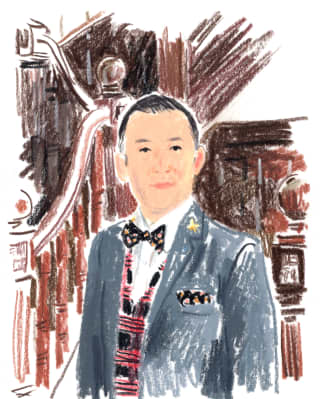
Ask The Concierge: Toru Machida's London
Introducing our new series Ask The Concierge, we spoke to Toru Machida, Head Concierge at The Cadogan. With him, we dive in to find out more about the best spots in Chelsea and beyond.
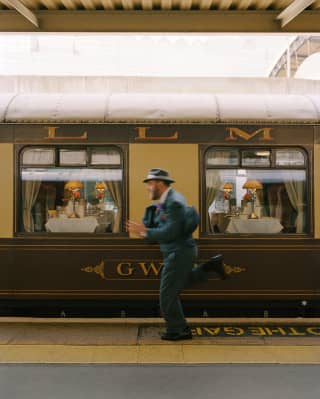
Investigate London’s New Murder Mystery Experience
One train, five courses, ten suspects. A new immersive murder mystery experience on board the British Pullman train is setting off from London for a wildly entertaining whodunit.

Vamos À Festa!
Rio Carnival is rooted in the fabric of Brazilian tradition. Discover the history of the biggest party in the world, where you need to stand out to fit in.
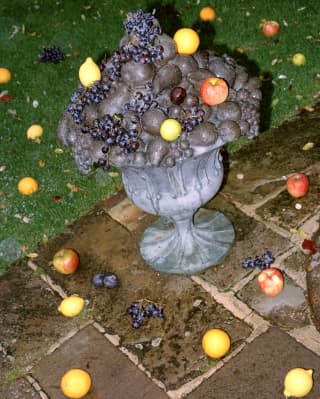
Feast on Art at Le Manoir aux Quat’Saisons
For the past forty years, Chef Raymond Blanc OBE has been serving dishes plated like paintings at Le Manoir aux Quat’Saisons – alongside amassing a collection of artistic commissions for the hotel. Inspired by the stories that make this hotel feel like a home, discover some of Le Manoir’s most prized artistic pieces.
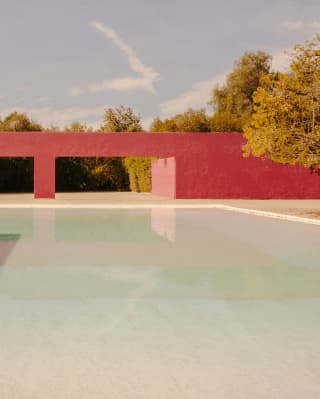
An Art & Design Lover’s Guide to Mexico City
While Modernist icons like Frida Kahlo, Diego Rivera and Luis Barragán sowed the seeds of greatness, a new cohort of creatives are steering Mexico City’s cultural conversation into a contemporary space. Beyond the few days in February that make up art week and the well–trodden landmarks that feature in every other city guide, there is plenty more here that promises to reward the art and design lover that is willing to dig deeper.